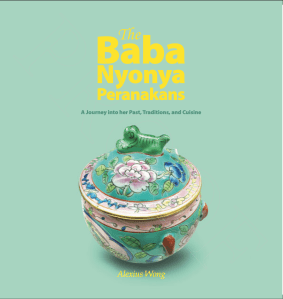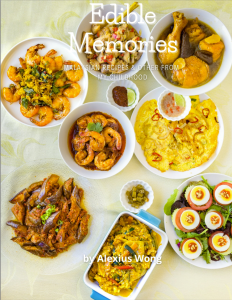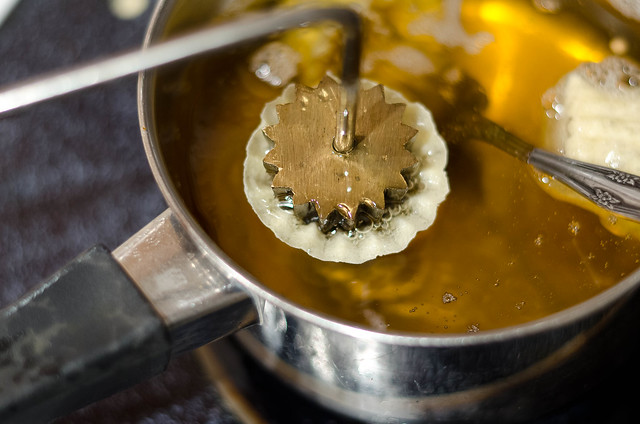
Happy Chinese or Lunar New Year of the Pig to everyone. I hope you managed to start this new year with a fantastic and scrumptious celebration. In my household, there would be weeks’ worth or preparation and cooking for this festive event, with lots of dishes, snacks, and condiments made in advance in anticipation for the big event. Kueh Pai Tee is one of those that we looked forward to with hungry stomachs.
In the weeks leading up to the New Year, Nyonya ladies would get together, some having traveled from afar, in order to work communally as they prepared for the festivities. Many dishes were made ahead of time due to the lengthy and labor-intensive nature of certain dishes. The main staple, Nyonya pickles, also known as achar ahwak or achar chili melaka, would definitely be made in advance. I remember seeing trays of sliced cucumbers, chilis, and green papaya shreds lying out in the sun as they dried in preparation for the pickling process. Beside making the pickles, most of the time would also be spent making special cakes, pastries, and desserts for the celebration: pineapple tarts, dodol, kueh bakul, kueh bangkit, kueh kapit (love letters), tapeh pulut, pulut tekan (an uncustomary family tradition), and sri kaya. The tapeh pulut was also made in advance since the glutinous rice needed several days to ferment in order to produce the boozy liquid that both adults and kids enjoyed very much; this was the only time when no prohibitions were in place for children to consume this alcoholic drink. Keropok, fish or shrimp crackers (photo), would also be made in advance since the cracker chips had to be dried in the sun for a couple of days before puffing up miraculously when fried in hot oil.
The English name of this dish, or Kueh Pai Tee in the Peranakan vernacular, comes from the shape of the shells themselves as you may have figured it out already. While growing up, we ate it only occasionally, and it is one of the rare dishes that was classified as a true appetizer. I remember that they were only served on special occasions or celebrations like birthdays and Chinese New Year. However, these days, my family serves it regularly for dinner since we are so fond of it.
One reason why this dish is so well-liked is because of its novelty and taste. The juxtaposition of the crunchy shell with the softer fragrant filling makes it the perfect match in the culinary world. True appetizers in Nyonya cuisine are rare, and their being served on special occasions adds to its charm and exquisiteness.
As for the taste, it is an explosion of rich flavors and textures: a light crispy shell holding a soft and moist jicama (sengkuang) filling cooked with fragrant five-spice powder, along with shrimp, crabmeat, fried shallots, coriander leaves, and topped with the spicy and sour chili cuka sauce. The thought of enjoying these stuffed shells brings me back to the days when large meals were served during festivities, and all the relatives and family friends would crowd around the table to get their hands on these small tasty bites before they ran out. Looking at their expressions and hearing their moans were indicative of their enjoyment brought about by a cornucopia of irresistible flavors and textures. This appetizer is truly scrumptious as it conjures up in a Peranakan’s mind a festive and joyous occasion with each savory bite.
You will need a brass tee mold with deep grooves on the side to make the shells. If you cannot find jicama or yam bean, Asian white radish is a good substitute. When made, these pastries are addictive and it will be hard to stop eating them, so make sure you have more than enough for each guest (at least three or four per person).
Kueh Pai Tee/Top Hats
Recipe from The Baba Nyonya Peranakans book
Serves 10 to 15
Shells total time: 1 hour 30 minutes
Filling total time: 1 hour 15 minutes
For the shells (makes 30 to 35):
4 tablespoons rice flour
2 tablespoons all-purpose flour
1 egg, beaten
¼ teaspoon salt
¼ cup plus 2 tablespoons water
Pai Tee mold
Vegetable oil
For the stuffing:
450 grams (1 pound) sengkuang (jicama/yam bean), peeled and grated into ½-centimeter- (¼-inch-) wide shreds (substitute – Asian white radish)
4 tablespoons vegetable oil
4 garlic cloves, minced (1 tablespoon)
1 tablespoon ground bean sauce (Cantonese: meen see)
225 grams (8 ounces) chicken breast or pork, finely minced
115 grams (4 ounces) shrimp, peeled and chopped fairly finely
¼ teaspoon five-spice powder
¼ teaspoon white pepper
2 tablespoons thin soy sauce
¾ cup water
Pinch salt
For the garnish:
2 eggs
Salt
1 tablespoon vegetable oil
Green leaf or Boston/Bib lettuce, torn into small pieces
½ cup crabmeat, cooked and shredded, from fresh crabs or precooked
Chili cuka sauce (recipe below)
½ cup fresh cilantro (coriander) leaves
¼ cup fried shallot rings
To make the shells:
- Mix together the rice flour and all-purpose flour, egg, and salt. Add the water little by little until the batter is very runny, like evaporated (not condensed) milk. It should pour from a spoon in an unbroken stream. You may have to adjust the amount of water to achieve this consistency.
- Heat the tee mold in a pot of enough hot oil to submerge the mold on medium heat for 3 minutes. Remove from the oil, wipe the bottom of the mold clean of oil, then dip the mold into the batter, all the way to the top of the ridges to get a curved edge when frying. Then place the mold back into the oil to deep-fry on medium heat until golden brown. Lift the mold slightly out of the oil to allow the dough to make a “brim.” Do not allow the bottom of the mold to touch the bottom of the pan for 30 seconds so that it will set partially. (Three shells can be fried at the same time by loosening the shells after a minute and submerging them in the oil with forks and spoons.
- Remove and drain the shells on paper towels, and store in an airtight container.
To make the filling:
- Squeeze the shredded jicama in cheesecloth until very dry. In a pot on medium-high heat, heat the oil and stir-fry the garlic until lightly brown, 1 minute. Add the bean sauce and stir for 1 minute. Add the chicken and cook, stirring to break it up into fine pieces, until there is no visible pink. Add the jicama, shrimp, five-spice powder, white pepper, and 2 tablespoons soy sauce. (If using Asian white radish, add 1½ tablespoons of sugar).
- Add the water, lower the heat to medium-low, cover but leave the lid ajar, and simmer until the jicama is soft, no longer crunchy, and quite dry, about 15 minutes. Taste and adjust the seasoning with salt—it should taste well seasoned. Remove and let cool.
For the garnish:
- Break the eggs into a bowl and beat them lightly with a pinch of salt. Place a pan on medium-low heat and heat the oil. Wipe the pan with a paper towel. Pour enough egg into the pan to make a thin pancake. When the sides curl up, pick the pancake up and flip it to cook for 10 seconds. Remove and place on a plate. Cover with plastic wrap. Repeat with the rest of the egg mixture, wiping the pan with the oiled paper between pancakes.
- When the pancakes are cool, roll them up, slice first into four long and wide strips, then again into narrow strips.
To serve:
Fill the shells with pieces of lettuce followed by the jicama filling. Garnish with slices of egg pancake, crabmeat, chili cuka sauce, cilantro, and the crispy fried shallot rings, in that order. This has to be eaten immediately, otherwise the shell will get soft and soggy.
Chili Cuka
10 Finger Hot red chile peppers, stemmed, or 4 tablespoons paste/sambal oelek
6 garlic cloves, peeled and crushed
2.5 centimeter (1-inch) knob young ginger root, peeled
1 tablespoon sugar
Juice from 15 limau kasturi or 3 large limes, (15 tablespoons juice)
1 teaspoon salt
In a food processor, purée the chile peppers to a paste. Measure 4 tablespoons of paste and save any extra for a future use. Return the 4 tablespoons of paste to the processor and add the garlic and ginger. Purée to a fine paste. Stir in the sugar and lime juice. Add the salt to taste. Refrigerate in a bottle if not consumed immediately.


The hardcopy and e-book of The Baba Nyonya Peranakans book (1st image) and Edible Memories e-cookbook (2nd image) are available – more information on the Homepage.


One thought on “Happy Chinese New Year – Top Hats/Chili Cuka”